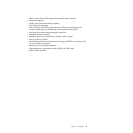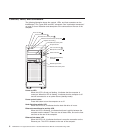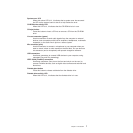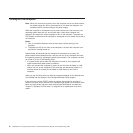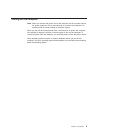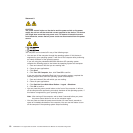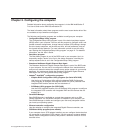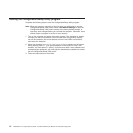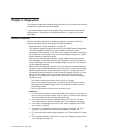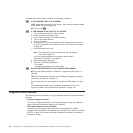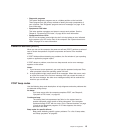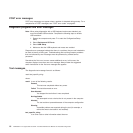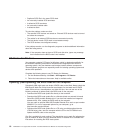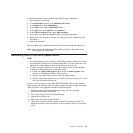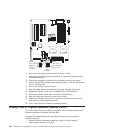
Chapter 3. Diagnostics
This chapter provides basic troubleshooting information to help solve some common
problems that might occur with the computer.
If you cannot locate and correct the problem using the information in this section,
see Appendix A, “Getting help and technical assistance,” on page 125 for more
information.
General checkout
Follow the checkout procedure for diagnosing hardware problems. Review the
following information before performing the checkout procedure:
v Read Appendix B, “Safety information,” on page 127.
v The computer diagnostic programs are stored on the IBM Enhanced Diagnostics
CD. These programs provide the primary methods of testing the major
components of the computer. If you are not sure whether a problem is caused by
the hardware or by the software, you can run the diagnostic programs to confirm
that the hardware is working correctly.
v When you run the diagnostic programs, a single problem might cause several
error messages. If you receive several error messages, correct the cause of the
first error message. The other error messages might not occur the next time you
run the diagnostic programs.
v Before running the diagnostic programs, you must determine whether the failing
computer is part of a shared hard disk drive cluster (two or more servers sharing
external storage devices). If you suspect that it is part of a cluster, you can run
all diagnostic programs except the ones that test the storage unit (that is, a hard
disk drive in the storage unit) or the storage adapter that is attached to the
storage unit. The failing server might be part of a cluster if any of the following
conditions is true:
– The customer identifies the failing server as part of a cluster.
– One or more external storage units are attached to the failing server and at
least one of the attached storage units is also attached to another server or
unidentifiable device.
– One or more servers are located near the failing server.
v Important:
1. For servers that are part of a shared hard disk drive cluster, run one test at a
time. Do not run any suite of tests, such as “quick” or “normal” tests, because
this could enable the hard disk drive diagnostic tests.
2. If more than one error code is displayed, correct the first error. The other
error codes might not occur the next time you run the diagnostic programs.
3. If the server is suspended and a POST error code is displayed, see “POST
error codes” on page 85.
4. If the server is suspended and no error message is displayed, see “Error
symptoms” on page 95 and “Undetermined problems” on page 113.
5. For information about power-supply problems, see “Power checkout” on page
22.
6. For intermittent problems, check the error log; see “Diagnostic programs and
error messages” on page 16.
© Copyright IBM Corp. 2004, 2009 13



